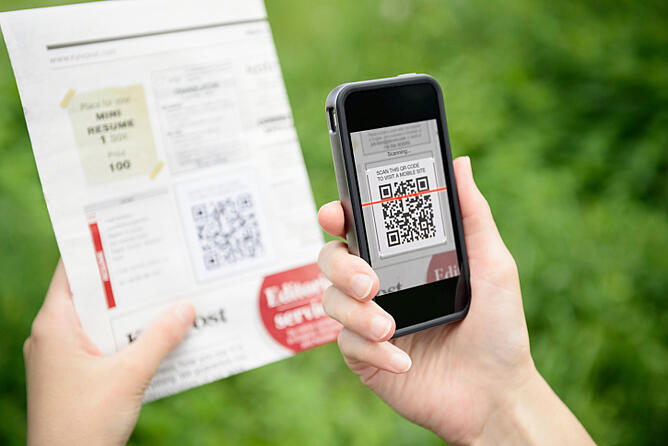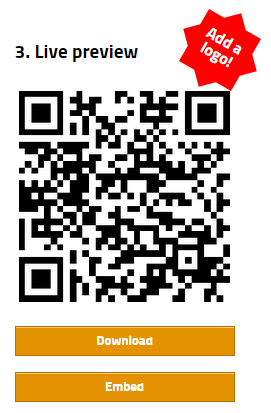Pernyataan Keputusan PT3 2017
December 13, 2017
Calon-calon yang telah menduduki peperiksaan Pentaksiran Tingkatan 3 (PT3) bagi tahun 2017 boleh mendapatkan pernyataan keputusan PT3 masing-masing pada satu tarikh dalam bulan Disember 2017
TARIKH DAN SEMAKAN KEPUTUSAN PT3 TAHUN 2017 SECARA ONLINE DAN SMS
Pada tarikh rasmi keputusan Pentaksiran Tingkatan 3 (PT3) diumumkan, semua calon yang terbabit boleh mendapatkan pernyataan keputusan di sekolah masing-masing jam 10 pagi (waktu umum), bagaimanapun terdapat sekolah yang mengadakan majlis penyerahan keputusan pelaporan Pentaksiran Tingkatan 3 (PT3) 2017 bermula jam 10 pagi
Berikut adalah ruangan maklumat terkini berkaitan tarikh rasmi keputusan peperiksaan PT3 2017 diumumkan dan cara untuk mendapatkan keputusan masing-masing serta panduan permohonan penyemakan semula keputusan PT3

https://www.mysumber.com/keputusan-pt3.html
Untuk pengetahuan calon, pihak pengurusan sekolah akan memberitahu tarikh majlis penyerahan keputusan pelaporan Pentaksiran Tingkatan 3 (PT3) 2017 kepada calon yang terbabitOleh itu, sila dapatkan maklumat lanjut mengenai tarikh penyerahan keputusan pelaporan PT3 2017 daripada pihak sekolah masing-masing
TARIKH DAN SEMAKAN KEPUTUSAN PT3 TAHUN 2017 SECARA ONLINE DAN SMS
Pada tarikh rasmi keputusan Pentaksiran Tingkatan 3 (PT3) diumumkan, semua calon yang terbabit boleh mendapatkan pernyataan keputusan di sekolah masing-masing jam 10 pagi (waktu umum), bagaimanapun terdapat sekolah yang mengadakan majlis penyerahan keputusan pelaporan Pentaksiran Tingkatan 3 (PT3) 2017 bermula jam 10 pagi
Berikut adalah ruangan maklumat terkini berkaitan tarikh rasmi keputusan peperiksaan PT3 2017 diumumkan dan cara untuk mendapatkan keputusan masing-masing serta panduan permohonan penyemakan semula keputusan PT3
PENTAKSIRAN TINGKATAN 3
| ||
| RESULT PT3 2017 | ||
Tarikh Pengumuman Keputusan
|
14 Disember 2017 (Khamis)
Masa: 8 / 9 / 10 Pagi Tempat: Dewan Sekolah Pakaian: Uniform Sekolah |
Tarikh dan masa yang dinyatakan adalah rasmi
|
 Senarai Pelaporan Yang Akan Diterima Oleh Calon Senarai Pelaporan Yang Akan Diterima Oleh Calon |
 Pelaporan Pentaksiran Tingkatan 3 (PT3) Pelaporan Pentaksiran Tingkatan 3 (PT3) |
 Pelaporan Pentaksiran Sekolah (PS) Pelaporan Pentaksiran Sekolah (PS) |
 Pelaporan Aktiviti Jasmani, Sukan Dan Kokurikulum (PSJSK) Pelaporan Aktiviti Jasmani, Sukan Dan Kokurikulum (PSJSK) |
 Pelaporan Psikometrik (PPsi) Pelaporan Psikometrik (PPsi) |
 Keputusan Pelaporan PT3 2017 Keputusan Pelaporan PT3 2017 | |
 Calon Sekolah Calon Sekolah |  Calon Persendirian Calon Persendirian |
| Calon sekolah adalah melalui sekolah masing-masing bermula jam 10 pagi pada tarikh rasmi keputusan diumumkan | Calon persendirian boleh menghubungi Jabatan Pendidikan Negeri (JPN), tempat mendaftar PT3 |
  Semakan Keputusan PT3 2017 Secara Online Dan SMS Semakan Keputusan PT3 2017 Secara Online Dan SMS |
| Perkhidmatan semakan keputusan PT3 2017 secara atas talian (online) serta melalui sistem pesanan ringkas (SMS) tidak disediakan. Harap maklum |
| Ia berikutan tiada pengumuman secara berpusat, selepas pelaksanaan Pentaksiran Berasaskan Sekolah (PBS) diperkenalkan pada tahun 2014 bagi menggantikan peperiksaan Penilaian Menengah Rendah (PMR) |
 Permohonan Penyemakan Semula Keputusan PT3 2017 Permohonan Penyemakan Semula Keputusan PT3 2017 |
 Calon yang kurang berpuas hati dengan keputusan PT3 yang diperoleh boleh membuat permohonan penyemakan semula keputusan Calon yang kurang berpuas hati dengan keputusan PT3 yang diperoleh boleh membuat permohonan penyemakan semula keputusan |
 Caj atau kadar bayaran yang dikenakan untuk permohonan penyemakan semula keputusan PT3 adalah sebanyak RM50.00 bagi satu mata pelajaran Caj atau kadar bayaran yang dikenakan untuk permohonan penyemakan semula keputusan PT3 adalah sebanyak RM50.00 bagi satu mata pelajaran |
 Permohonan penyemakan semula keputusan hendaklah dibuat dengan menggunakan borang yang disediakan oleh Lembaga Peperiksaan Permohonan penyemakan semula keputusan hendaklah dibuat dengan menggunakan borang yang disediakan oleh Lembaga Peperiksaan |
 Borang boleh didapati dari sekolah, Sektor / Unit Penilaian dan Peperiksaan, JPN dan LP atau dimuat turun dari laman sesawang Lembaga Peperiksaan http://lp.moe.gov.my Borang boleh didapati dari sekolah, Sektor / Unit Penilaian dan Peperiksaan, JPN dan LP atau dimuat turun dari laman sesawang Lembaga Peperiksaan http://lp.moe.gov.my |
 Tarikh tutup permohonan penyemakan semula keputusan adalah 30 hari dari tarikh pengumuman rasmi keputusan PT3 Tarikh tutup permohonan penyemakan semula keputusan adalah 30 hari dari tarikh pengumuman rasmi keputusan PT3 |
 Keputusan penyemakan semula PT3 akan dikeluarkan serta dimaklumkan melalui surat rasmi dalam tempoh dua bulan dari tarikh permohonan calon Keputusan penyemakan semula PT3 akan dikeluarkan serta dimaklumkan melalui surat rasmi dalam tempoh dua bulan dari tarikh permohonan calon |

How Do QR Codes Work?
December 12, 2017
How Do QR Codes Work? The Basics ...
QR Codes, short for "quick response" codes, are little black and white squiggly barcodes that usually look something like this:
(I say "usually" because they can be different colors and shapes, but you get the picture.) You'll often find them on direct mail, signage, billboards, maybe even in commercials.
Originally designed in Japan for the automotive industry, marketers adopted the barcodes because of their large storage capacity and ability to translate additional information to consumers beyond what creative and/or packaging could convey. If a consumer sees a QR code somewhere, they can take out their mobile device, open up a QR code scanner, and "scan" the barcode to gain access to additional information, like so:

So if you wanted to promote, say, a podcast series on an advertisement at a bus stop, you could create a QR code that sends scanners to your iTunes page. Make sense? Cool.
How to Make a QR Code
The QR code creation process is pretty straightforward. Here's how to get started.
Step 1: Select a QR code generator.
There are tons of QR code generators out there, but a few of the post popular include Kaywa, GOQR.me, Visualead, and QR Stuff. Some things to look for when choosing a QR code generator are whether you can track and analyze performance, if it allows you to design a code that's unique to your brand, and if it is compatible with common QR code readers.
Step 2: Design and link it up.
The fun part of creating QR codes is customizing the design of the codes to your brand. Want your code to look like your logo? Go for it. Want it to reflect your website's design scheme? Should be no problem.
To demonstrate how easy it is, let's select one of the QR code generators above and do a walkthrough together. I'll select GOQR.me.
1. Select what type of content you want your QR code to send the consumer to -- we'll choose a URL for this example.

2. Insert the content (in this case, a URL).

3. Check out the preview, customize as desired, then download and/or embed where needed.

Quite simple, right? Of course, you can customize your QR code further -- adjusting the colors, adding a logo, creating social options, and more.
Step 3: Test the QR code.
In all the excitement of creating your first QR code, don't forget to check to see if the QR code “reads” correctly, and be sure to try more than just one reader. A good place to start is the free tool Google Goggles, which takes a picture and then tells you what link or item it “reads to.” Another great free tool is QR Code Reader, which automatically takes you to whatever it “reads.” Apple's Passbook also offers a built-in QR code reader on iOS 7, so you should test to make sure your code is readable there, as well.
Step 4: Track and analyze performance.
Just like any marketing campaign, you should follow up on any collateral or campaigns using QR codes to see whether they're actually working. How much traffic comes from each specific code? Are people scanning your code but not redeeming their offer once they get to the landing page? Or are they not even compelled enough to scan your QR code? Knowing this will help you troubleshoot and adjust your poorly performing QR codes to more closely mirror those that work well. I recommend you include a UTM tracking code on your URL so you can better measure performance -- this is particularly important if you use closed-loop marketing analytics, and are used to more in-depth reporting on your campaigns.
QR Code Best Practices: Some Important Do's and Don'ts
Now that you see how simple the QR code creation process can be, let's talk about some best practices that'll help increase the likelihood your QR code actually gets used.
QR Code Do's
1) Do put QR codes in places where scanning is easy, and there's enough time for the consumer to actually scan the code. While you may often see QR codes on billboards and TV commercials, they're not exactly the most user-friendly locations. Think of places and mediums where consumers have the time to scan the code, and, ideally, a Wi-Fi connection as well.
2) Do mobile-optimize the page to which you're sending people. Consumers will be on their phone when scanning the QR code, so they should be brought to a page with a positive mobile experience.
3) Do offer a call-to-action (CTA) with the code -- that is to say, tell people what they're supposed to do when they see the code, and what they'll receive if they do it. Not everyone knows exactly what a QR code is, and those that do won't be motivated to scan it unless they're sure there's something worthwhile on the other side.
QR Code Don'ts
1) Don't require a special QR code scanner. Your QR code should be app-agnostic so anyone can scan your code with any reader. A lower barrier to entry makes success more likely for you and the user.
2) Don't use a QR code just for the sake of using one. For instance, it's common for marketers to think, "How can I bridge the offline experience with the online experience? Uhhh ... QR code!" That's not wrong ... but it's not always right, either. If you have content that makes sense to deliver to a mobile user, and you have an appropriate vehicle to do it (see #1 in the "Do" section above) it's more likely your QR code will drive results. For example, in South Korea, grocery store chain Tesco drove tremendous national business growth by using QR codes in subway stations (I guess they have mobile service in their subway stations) to let riders order their groceries while they wait. It's a great example of using QR codes for the right end-goal, at the right place and time. This article from Search Engine Journal has some more examples of good times to use QR codes, as well.
If after reading this you’re not convinced QR codes are the right move -- or you just want some additional ways you can connect the offline world to the online world -- consider also adding a short, memorable URL people can type in easily on their mobile phones in your creative.
The future of QR codes could also mean an evolution -- augmented reality apps certainly stem from the same concept, after all. Consider the AR News App, which lets readers augment a newspaper story into a child-friendly article by downloading an app and hovering over stories with a special marker (sounds pretty close to a QR scanner, doesn't it?). It may be that QR codes aren't quite dead, but just the first step in a long evolution.
Editor's Note: This post was originally published in December 2011 and has been updated for accuracy and comprehensiveness.
https://blog.hubspot.com/blog/tabid/6307/bid/29449/how-to-create-a-qr-code-in-4-quick-steps.aspx
